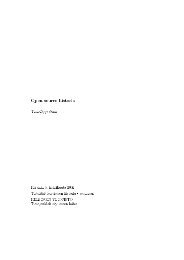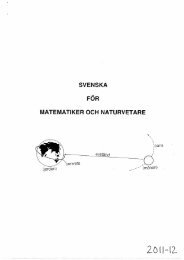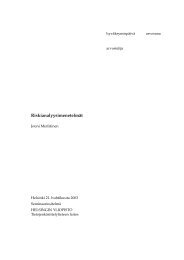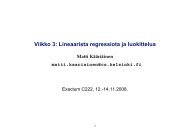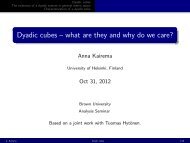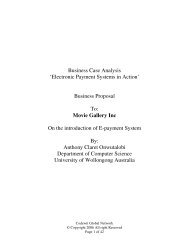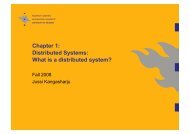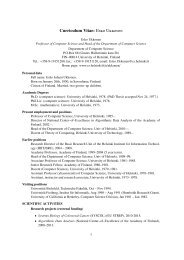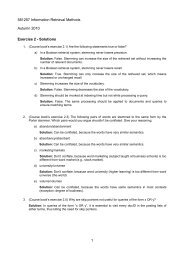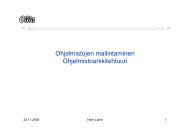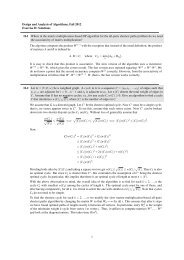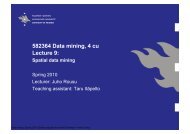Calculating trust in sensor networks
Calculating trust in sensor networks
Calculating trust in sensor networks
Create successful ePaper yourself
Turn your PDF publications into a flip-book with our unique Google optimized e-Paper software.
uilt between two or several nodes that agree to share the monitor<strong>in</strong>g work for their area.<br />
EEMP does not def<strong>in</strong>e strict timeslots for each node to do the monitor<strong>in</strong>g. The <strong>in</strong>dividual<br />
monitor<strong>in</strong>g timeslots for each node are <strong>in</strong>stead determ<strong>in</strong>ed randomly and <strong>in</strong>dependently.<br />
EEMP works by divid<strong>in</strong>g each timeslot <strong>in</strong>to two parts, the ON- and OFF-parts. Each<br />
node then decides probabilities that it will start monitor<strong>in</strong>g dur<strong>in</strong>g the ON-slot, and a<br />
probability that it will stop monitor<strong>in</strong>g dur<strong>in</strong>g the OFF-slot. Shared monitor<strong>in</strong>g is random,<br />
with the off chance that at some po<strong>in</strong>t, no node is monitor<strong>in</strong>g the area.<br />
The rat<strong>in</strong>g component draws <strong>in</strong>formation from the monitor<strong>in</strong>g component and gathers<br />
<strong>in</strong>direct observations from other nodes. First hand observations def<strong>in</strong>e the <strong>trust</strong> of a node<br />
by a number between 0 and 1. Trust is calculated as:<br />
riski = frequencyi<br />
frequencymax<br />
Where frequencymax is the maximum amount of bad behaviour that is tolerated per time<br />
and frequencyi is def<strong>in</strong>ed as:<br />
frequencyi = badbehaviouri<br />
timei<br />
Where badbehaviouri is the amount of bad behaviour noticed about node i and timei is<br />
the amount of time spent monitor<strong>in</strong>g node i.<br />
The scheme then works by assign<strong>in</strong>g un<strong>trust</strong>worthy nodes a high number, <strong>in</strong>dicat<strong>in</strong>g high<br />
risk. Trustworthy nodes receive a low number, <strong>in</strong>dicat<strong>in</strong>g low risk.<br />
Nodes may notify other nodes about node i by transmitt<strong>in</strong>g their risk for node i. These<br />
<strong>in</strong>direct observations are added to the overall risk by.<br />
riski = W ∗ riskdirect,i + (1 − W ) ∗ risk<strong>in</strong>direct,i<br />
Where W is a weigh<strong>in</strong>g factor that is used to def<strong>in</strong>e how much emphasis direct observa-<br />
tions are given over <strong>in</strong>direct observations. What is notable here is that WSNodeRater<br />
automatically <strong>trust</strong>s <strong>in</strong>direct observations and does not consider or weight the source of<br />
the <strong>in</strong>formation.<br />
28




